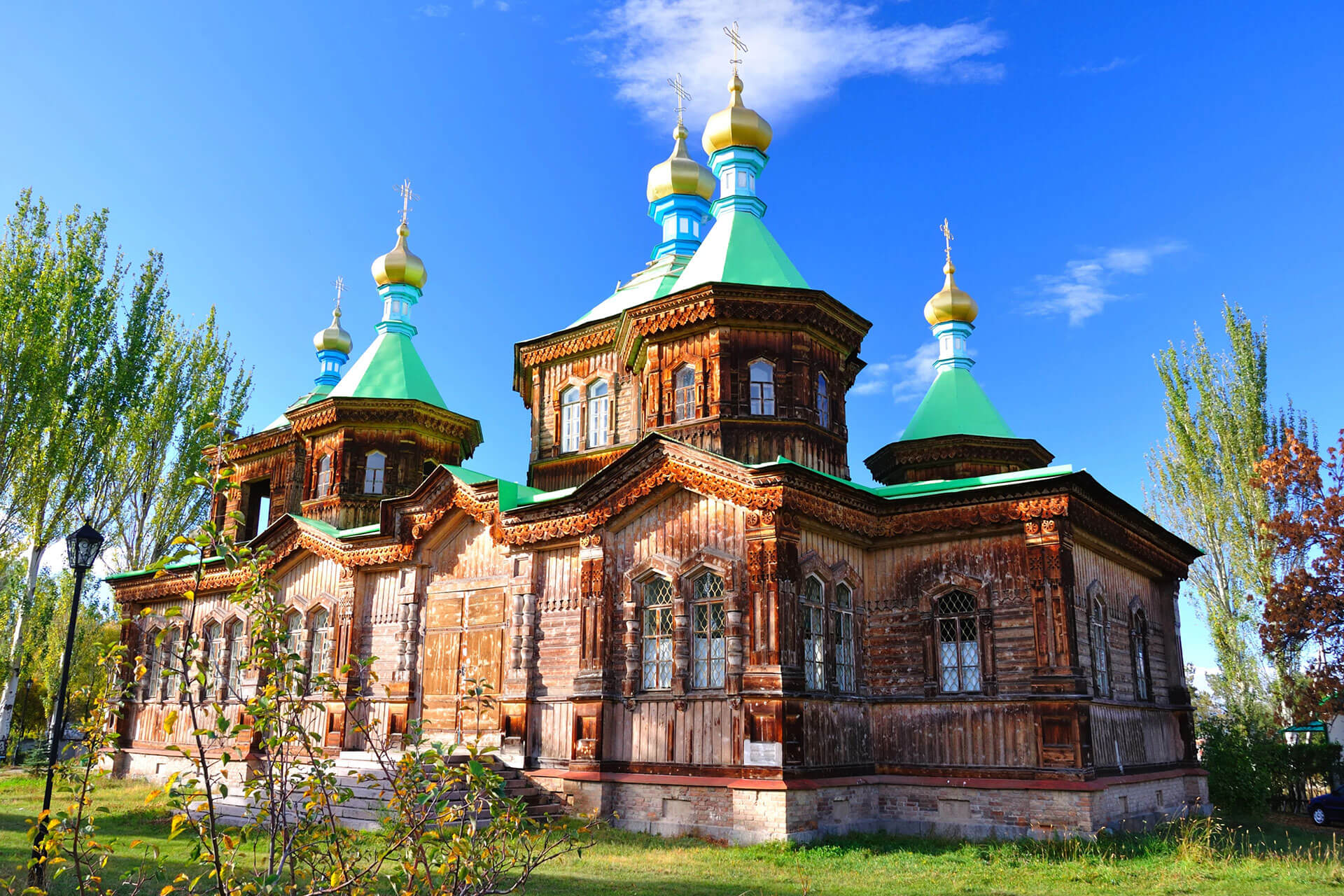
- On 31/01/2024
- In Blogs Travel Tips
- Tags:
Kyrgyzstan the Heart of Central Asia
Source: Wikipedia | DiscoverKyrgyzstan.org | VisitKyrgyz.com
There are currently 23 countries where visitors holding Vietnamese passports do not need to apply for a visa before arrival: Barbados, Brunei, Cambodia, Chile, Cook Islands, Dominica, Ecuador, Indonesia, Kyrgyzstan, Laos, Madagascar, Malaysia , Micronesia, Myanmar, Niue, Oman, Panama, Philippines, Rwanda, Singapore, Saint Vincent and the Grenadines, Suriname, Thailand
Kyrgyzstan offers various travel opportunities catering to different interests and preferences. Nature enthusiasts will be captivated by the country's breathtaking landscapes, including the majestic Tien Shan Mountains, crystal-clear lakes such as Issyk-Kul and Song Kol, and picturesque valleys like the Ala-Archa National Park. These natural wonders provide a perfect backdrop for hiking, trekking, horseback riding, and camping. Traveling to Kyrgyzstan allows you to engage with the warm and welcoming local communities. Experience the hospitality of Kyrgyz nomads by staying in yurts, traditional nomadic dwellings. Enjoy authentic Kyrgyz cuisine, which features hearty dishes like beshbarmak and manti, and sip on fragrant tea while listening to traditional music and folklore.
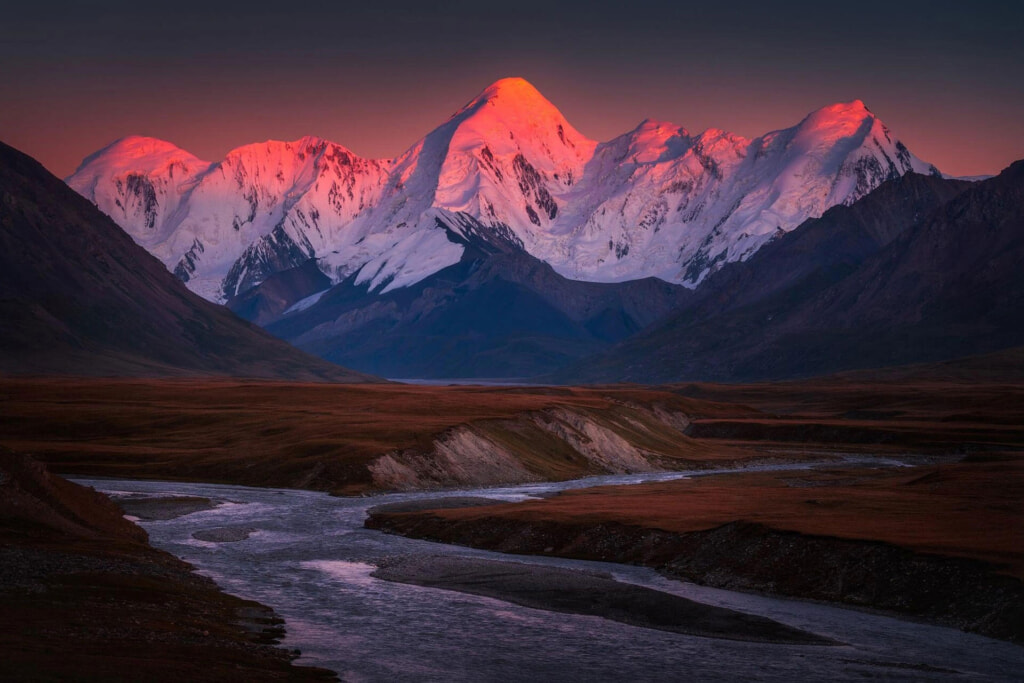
Kyrgyzstan is also gaining recognition as a destination for adventure tourism. Embark on thrilling outdoor activities, including mountaineering, skiing, paragliding, and white-water rafting. The country's pristine nature and untouched landscapes offer an exhilarating playground for adrenaline seekers. When planning your trip to Kyrgyzstan, consider exploring the unique cultural events and festivals throughout the year. The Nomad Games, World Nomad Games, and Kyrgyzstan's Independence Day celebrations are just a few examples of the vibrant festivities that showcase the country's traditions, arts, and sports.
Visiting Kyrgyzstan will undoubtedly leave you with unforgettable memories and a deep appreciation for its natural beauty and cultural heritage. Kyrgyzstan has everything if you're seeking outdoor adventures, cultural immersion, or a unique travel experience. So pack your bags, embark on a journey to this enchanting destination, and let Kyrgyzstan's wonders mesmerize you.
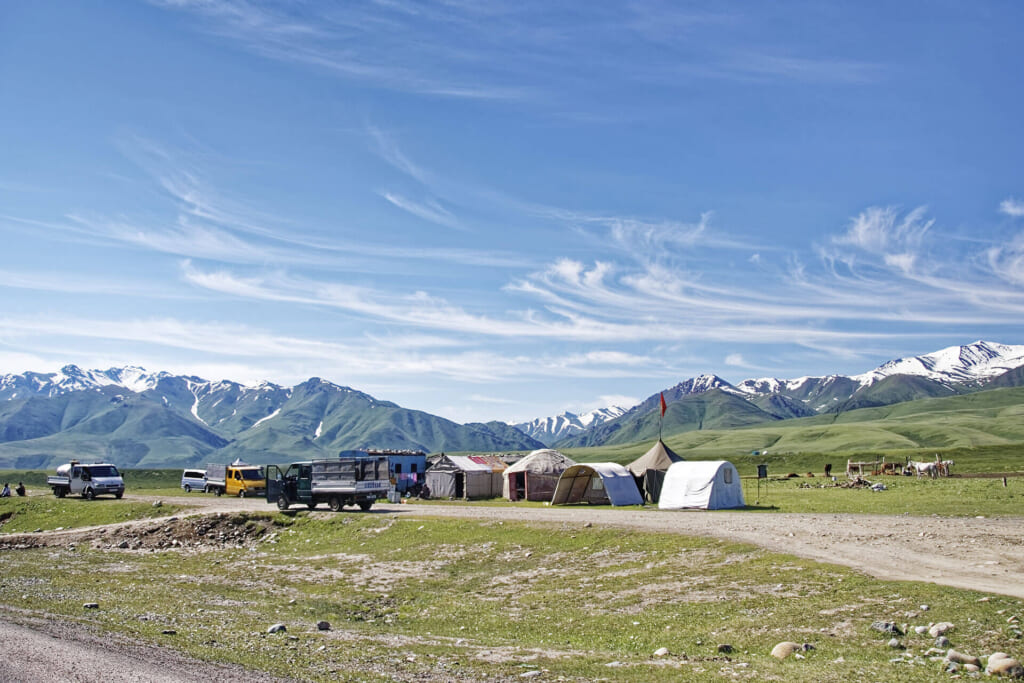
Sulaiman-Too Sacred Mountain
Sulaiman-Too Sacred Mountain Kyrgyzstan dominates the Fergana Valley and forms the backdrop to the city of Osh, at the crossroads of important routes on the Central Asian Silk Roads. For more than one and a half millennia, Sulaiman was a beacon for travellers revered as a sacred mountain. Its five peaks and slopes contain numerous ancient places of worship and caves with petroglyphs as well as two largely reconstructed 16th century mosques.
One hundred and one sites with petroglyphs representing humans and animals as well as geometrical forms have been indexed in the property so far. The site numbers seventeen places of worship, which are still in use, and many that are not. Dispersed around the mountain peaks they are connected by footpaths. The cult sites are believed to provide cures for barrenness, headaches, and back pain and give the blessing of longevity. Veneration for the mountain blends pre-Islamic and Islamic beliefs. The site is believed to represent the most complete example of a sacred mountain anywhere in Central Asia, worshipped over several millennia.
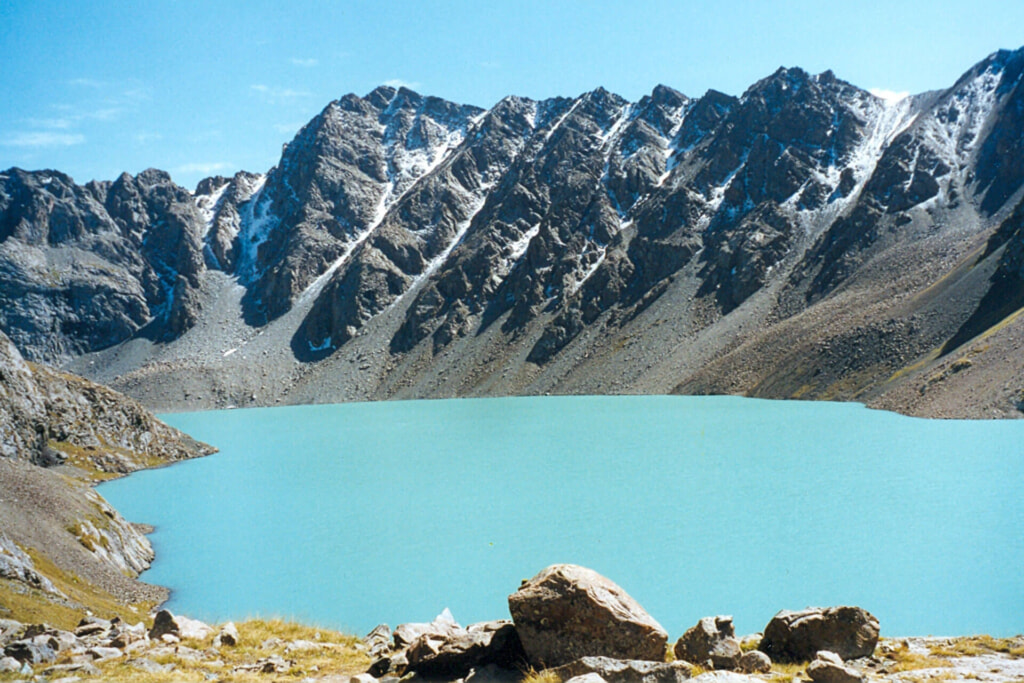
Issyk-Kul Lake
Issyk-Kul is an endorheic saline lake in the western Tianshan Mountains in eastern Kyrgyzstan, just south of a dividing range separating Kyrgyzstan from Kazakhstan. It is the seventh-deepest lake in the world, the tenth-largest lake in the world by volume though not in surface area, the deepest lake whose deepest point is above sea level at 939 meters or 3080 feet, and the third-largest saline lake. Issyk-Kul means «warm lake» in the Kyrgyz language; although it is located at a lofty elevation of 1607 metres and subject to severe cold during winter, it rarely freezes, due to the salinity. The lake is a Ramsar site of globally significant biodiversity and forms part of the Issyk-Kul Biosphere Reserve.
Issyk-Kul Lake was a stopover on the Silk Road, a land route for travelers from the Far East to Europe. The great Chinese Buddhist scholar-monk Xuanzang passed by this lake and noted the details in the classic travelogue Great Tang Records on the Western Regions in the 7th century. The lake was once a part of the territory of Qing Dynasty of China and was ceded to Russia – along with the surrounding territory – after the Treaty of Tarbagatai. Many historians believe that the lake was the point of origin for the Black Death that plagued Europe and Asia during the early and mid-14th century.
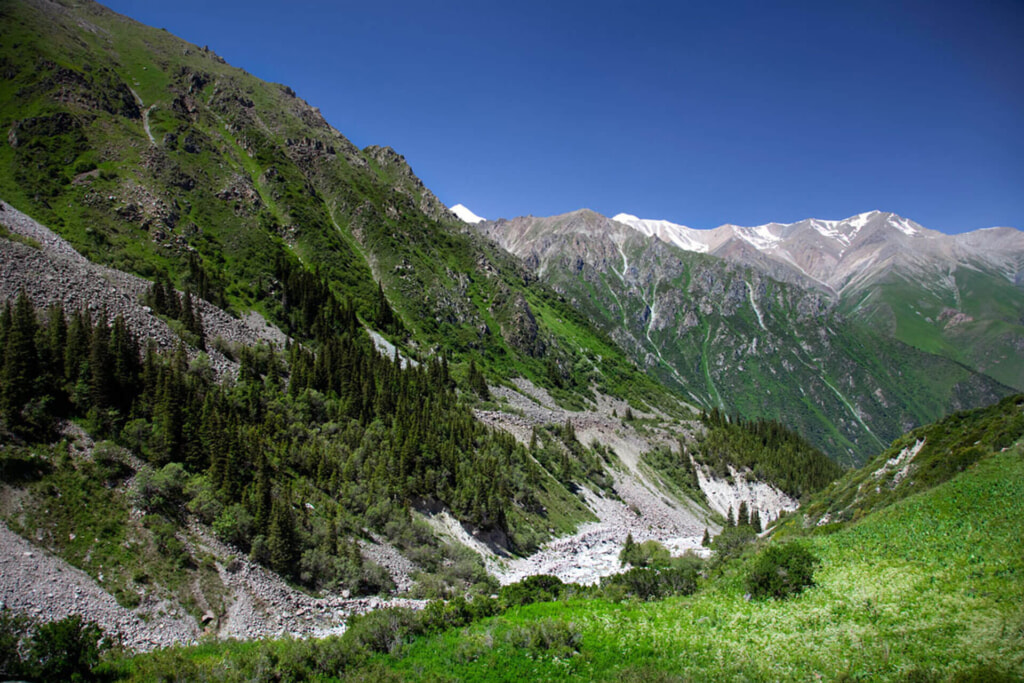
Ala-Archa Gorge
The Ala-Archa Nature Park is an alpine national park in the Tian Shan mountains of Kyrgyzstan, located approximately 35 km south of the capital city of Bishkek. Established in 1976, it currently covers 16,485 hectares. The nature park is named after the river Ala-Archa which flows through it. In Kyrgyz, the archa, which gives the river and the park its name, is a bright or many-colored juniper which the Kyrgyz people have traditionally held in special esteem, using smoke from its burning wood to chase away evil spirits. However, the archa is not supposed to be planted near the home, because it is believed gradually to sap the energy from human beings living close-by.
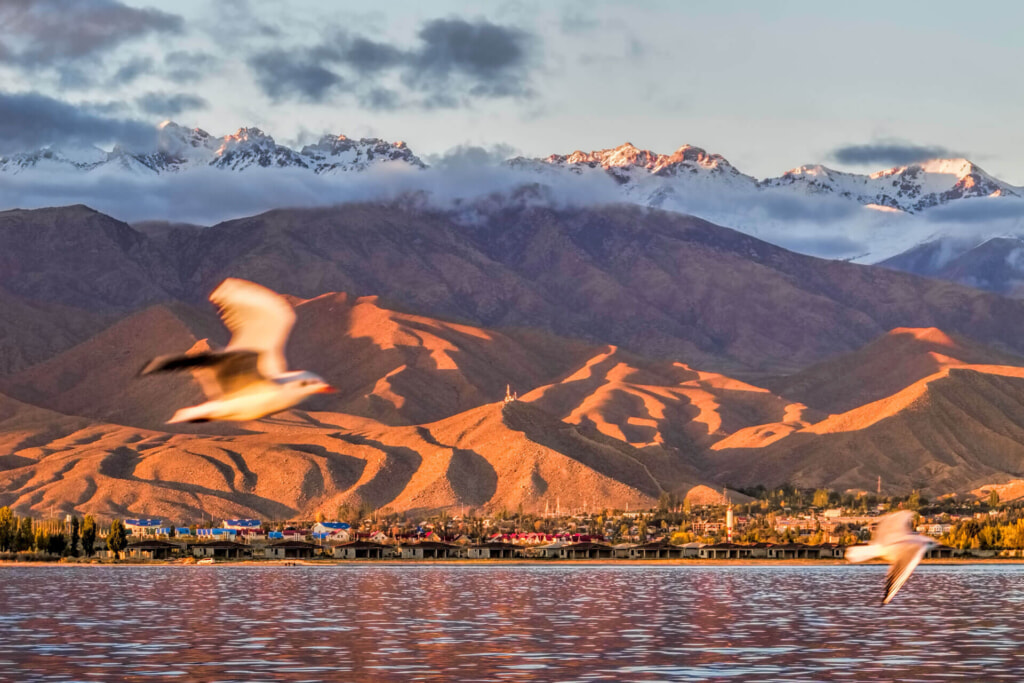
Altyn Arashan
Altyn Arashan is a valley and mountain resort near Karakol and Issyk Kul Lake, northeastern Kyrgyzstan. It lies along the trekking route from Teploklyuchenka. It is a hot spring development set in an alpine valley, containing the 5020 metre Pik Palatka in its southern part. It is said to include three groups of nitric thermals springs on the right side of the Arashan River, 20 km southeast of Karakol mountain, situated in a picturesque forest landscape at an altitude of 2350-2435 metres. The resort has numerous wooden sheds which contain hot sulfurous pools to cure various ailments. The resort is set in a botanical research area called the Arashan State Nature Reserve which has about 20 snow leopards and several bears.
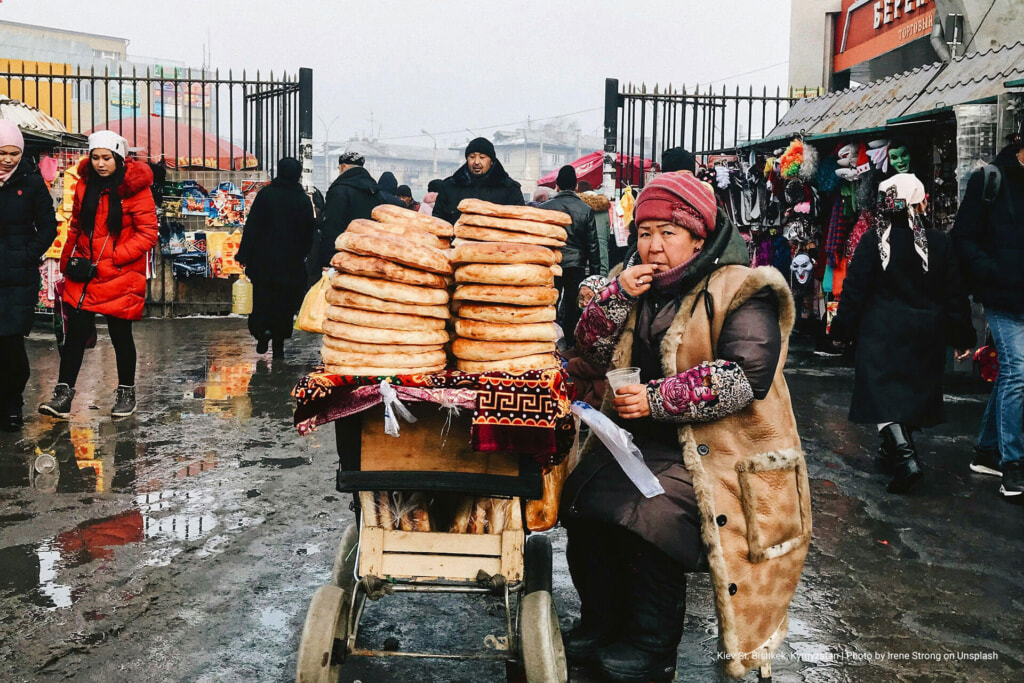
Osh Bazaar
Osh Bazaar is one of the largest bazaars in Bishkek, Kyrgyzstan. It is located on the west side of the city, and is not far from the Western Bus Station. Osh Bazaar in Bishkek was created in 1983, at the same time as other bazaars in other Kyrgyz cities. At Osh Bazaar, one can buy food products, almost any common household good, clothes, souvenirs, and even musical instruments. Kyrgyz national clothes are sold in the national goods section, called Kyyal and may be special ordered through the bazaar vendors. The national goods section also includes vendors who sell carved wooden trunks, national bedding, national cradles, small souvenirs, and many other locally produced items relevant to the traditional and modern culture of Kyrgyzstan.
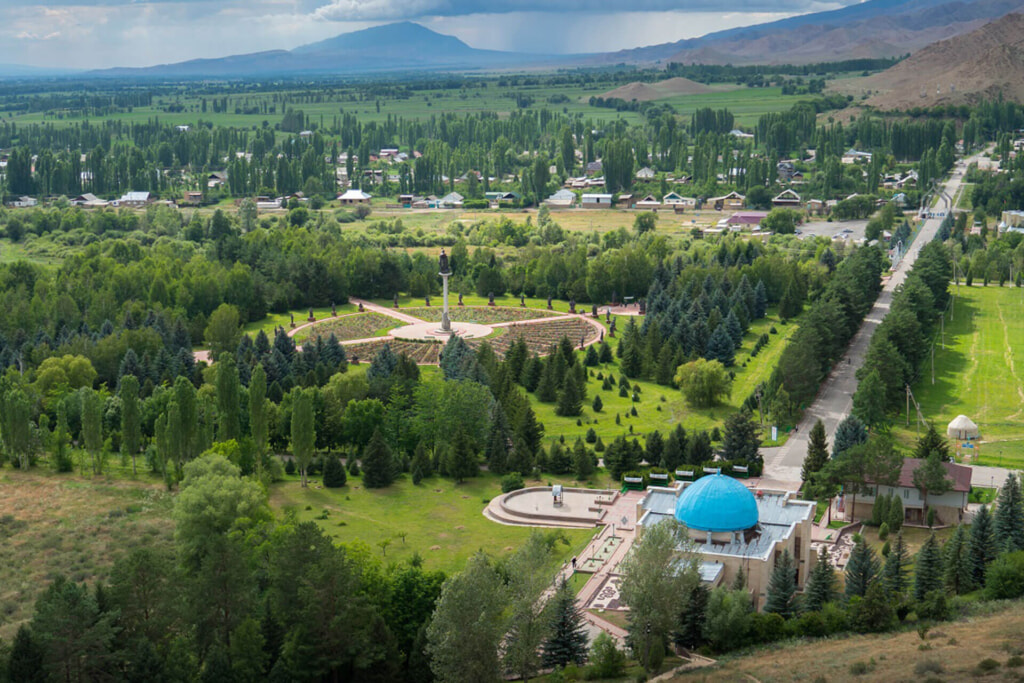
Ruh Ordo Cultural Center
The Cultural Center, named after famous Kyrgyz writer Chyngyz Aitmatov, was founded in 2002 in Cholpon Ata, right on the shore of Issyk Kul Lake in the open air. Ruh Ordo combines elements of various cultures and religions. Sculptures and portraits of famous people who left their mark in the history of mankind can be found here. One may also visit the Buddhist, Catholic, Orthodox, Muslim and Jewish churches that sit next to each other, symbolizing the unity of faith of all people on Earth. Ruh Ordo, which means «spiritual center» in Kyrgyz, is a special place where the atmosphere of peace prevails, which allows one to move away from the daily hustle and bustle and make a short trip into the world of beauty, into the spiritual world.
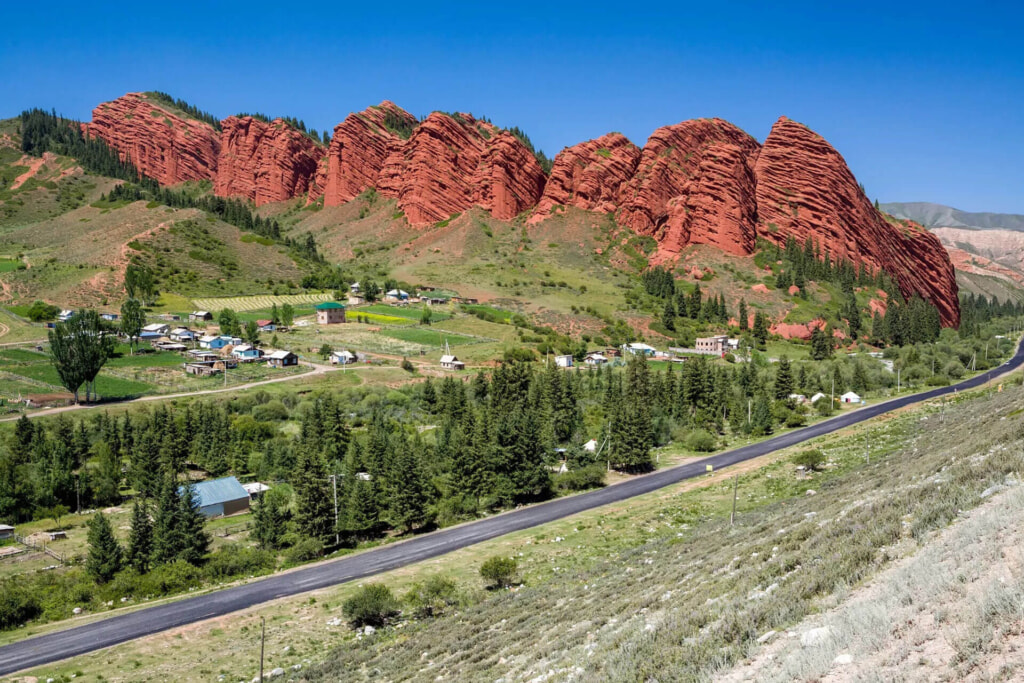
Jeti-Oguz Canyon or Seven Bulls Rocks
Jeti-Oguz Canyon, the Seven Bulls of Jeti-Oguz is one of the most famous landmarks of Kyrgyzstan, made up of several impressive natural sandstone formations. It is featured in many poems and paintings, as well as music videos. Part of the canyon resembles seven bulls, hence its name; another formation nearby is called «broken heart». According to a legend, the heart originated from a beautiful woman who died of a broken heart after two suitors killed each other fighting over her. Located about 15 miles southwest of Karakol, the area is known for its scenic environment, surrounded by forests and waterfalls, attracting several hikers and visitors. Other than tourists, there are also several yurts and nomadic men shepherding their cattle.
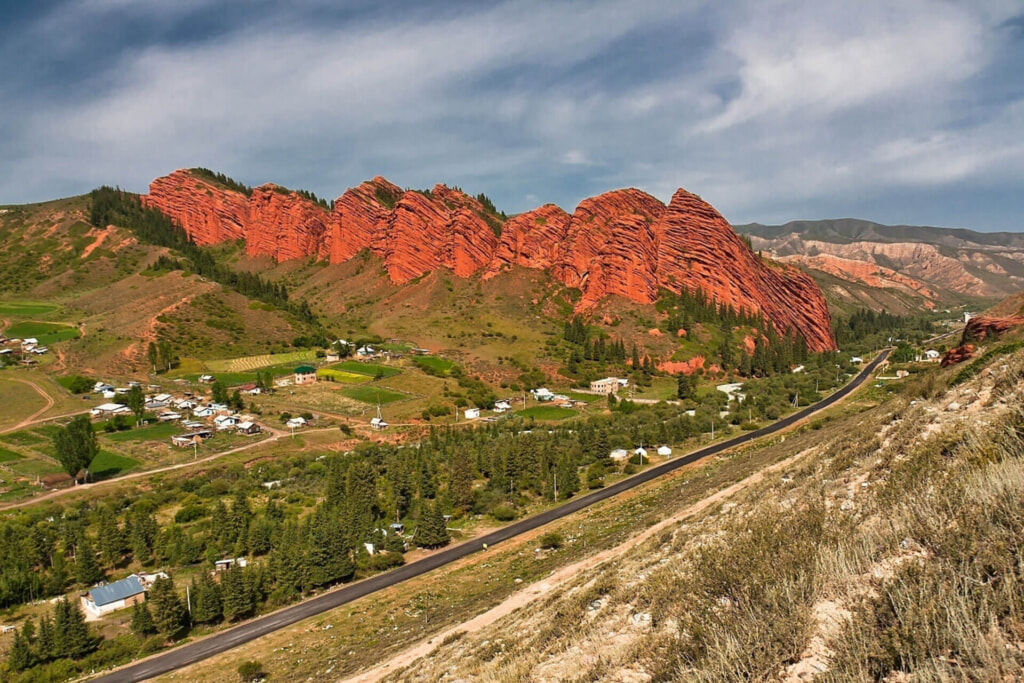
Canyon Fairy Tale
The Fairy Tale Canyon is located on the southern shore of Issyk-Kul Lake, 4 km from Tosor village. This is a true natural wonder. Water, wind, and sun have produced whimsical, fabulous shapes here. While some resemble mythical creatures (dragon ridge), the others look like other ordinary animals (camels, hippos, and elephants), while others portray amazing intricate structures such as castles, towers, and even China’s Great Wall. Due to particular nature of the soil, it is recommended to visit the canyon in dry weather.
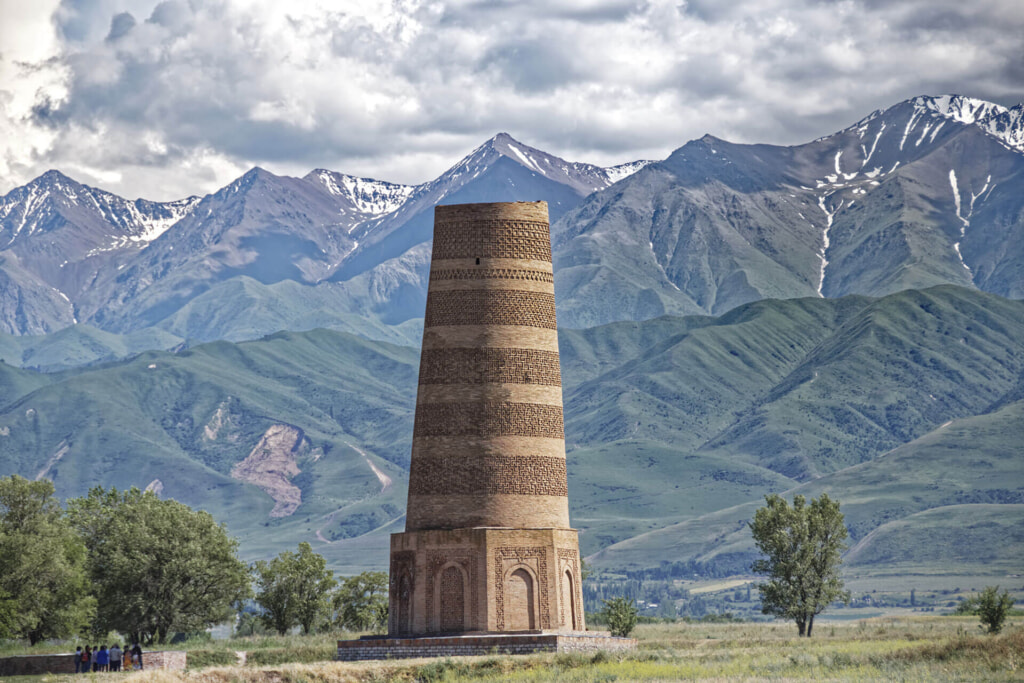
Burana Tower
The Burana Tower is a large minaret in the Chüy Valley in northern Kyrgyzstan. It is located about 80 km east of the country's capital Bishkek, near the town of Tokmok. The tower, along with grave markers, some earthworks and the remnants of a castle and three mausoleums, is all that remains of the ancient city of Balasagun, which was established by the Karakhanids at the end of the 9th century. The tower was built in the 11th century and was used as a template for other minarets. An external staircase and steep, winding stairway inside the tower enables visitors to climb to the top. It is one of the oldest architectural constructions in Central Asia.
Balasagun was an ancient Sogdian city in modern-day Kyrgyzstan, located in the Chüy Valley between Bishkek and the Issyk-Kul lake. Located along the Silk Road, the ruins of the city were inscribed in 2014 on the UNESCO World Heritage List as part of the Silk Roads: the Routes Network of Chang'an-Tianshan Corridor World Heritage Site.
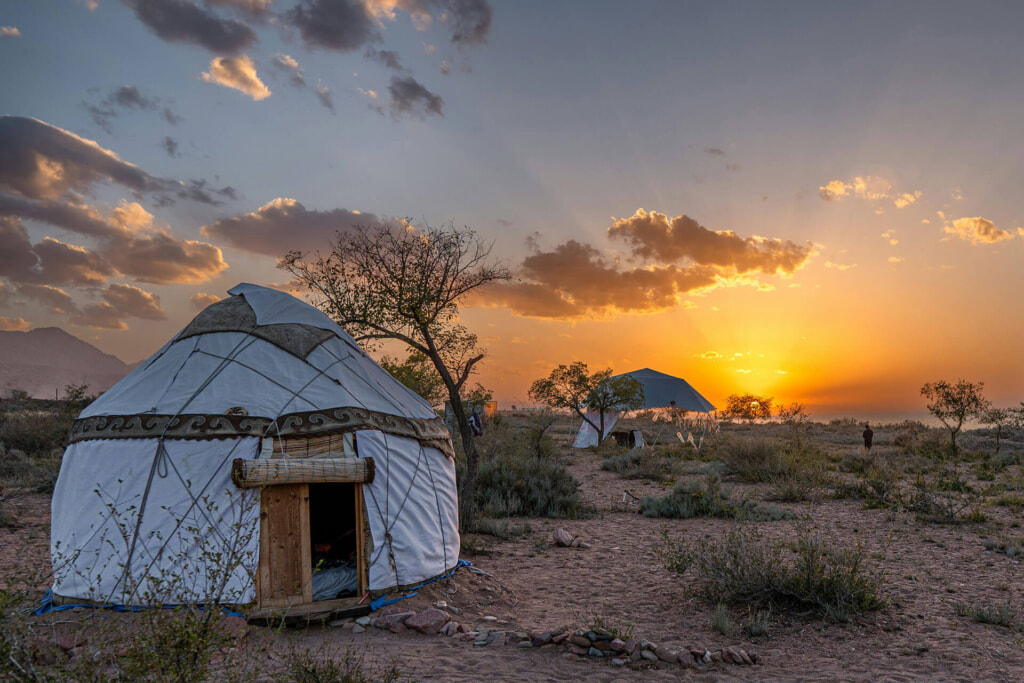
Song Kol Lake
Song Kol is a large alpine lake, sandwiched in a hollow between the inner spurs of the Tien Shan in the Naryn region, Kyrgyzstan. Sitting at 3016 meters above sea level, the lake is surrounded by virgin pastures, a conservation area, and the ridges of Sonköltoo and Moldotoo, making it the perfect site for ecological tourism. The shores of the lake are low, swamped, and in some places overgrown with reeds. The lake is glacier-fed and drains into the Son-Kul river and eventually the Naryn river. Ice on the lake is common from late September to late May. Song-Köl is the second largest lake in Kyrgyzstan after Issyk-Kul, and the largest fresh water lake in Kyrgyzstan.
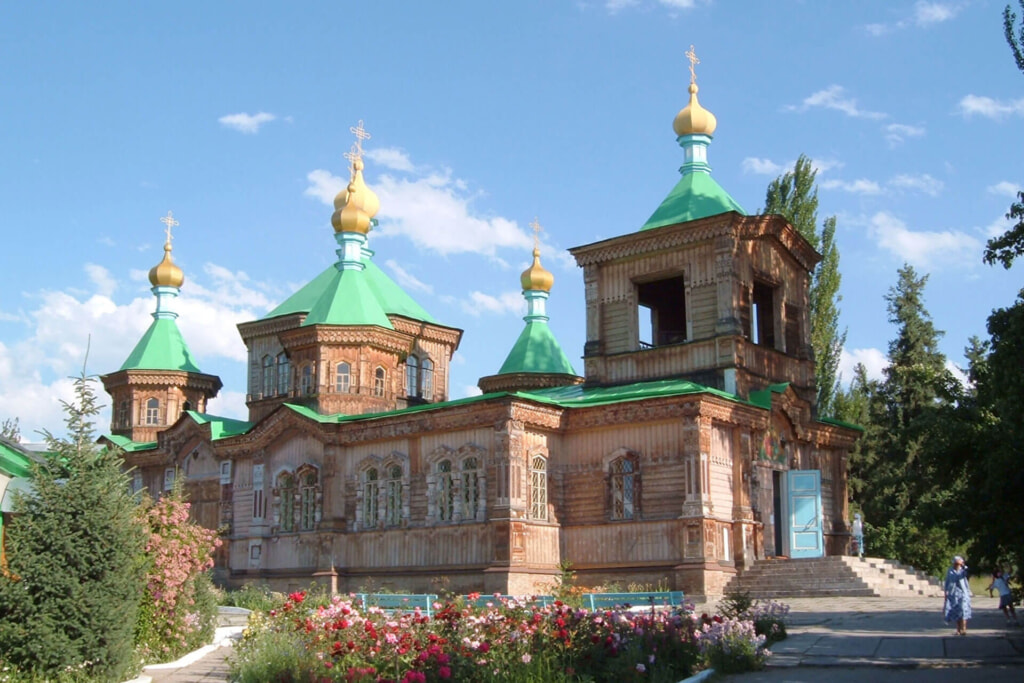
Holy Trinity Orthodox Church
One of the popular tourist attractions in Kyrgyzstan is the Orthodox Cathedral of the Holy Trinity in Karakol. This is one of something like forty orthodox churches in the country, and a fine example of architecture and its checkered history stands as a witness to the commitment and dedication of the community of the faithful. The story of the church goes back to July, 1869, when Karakol was basically a garrison town established as an outpost on the edges of the Tsarist Russian Empire. A chapel was established in the city centre to serve the Cossacks and other troops sent here, and a small brick building on stone foundations was erected.
It wasn’t the first church to be established in Kyrgyzstan, or even the Issyk Kul oblast. The first in Kyrgyzstan was a small wooden church in the village of Kyzyl Dyikan in the Chui oblast, and the first in Issyk Kul was the church in the village of Tyepliekluchenka, some kilometers to the East of Karakol, which was established in the Autumn of 1863 – also to serve a troop of Cossacks.
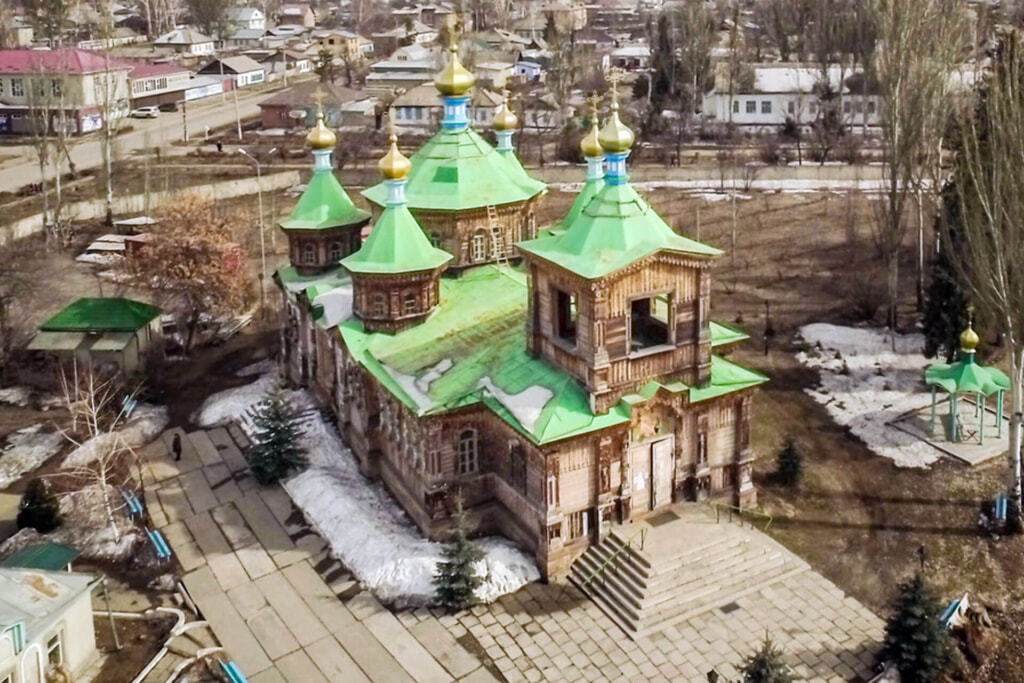
The Sary-Chelek Biosphere Reserve
The Sary-Chelek Biosphere Reserve is situated in the western Tien Shan Mountains on the southern spurs of the Chatkal Range in the west of Kyrgyzstan. The main part of the area comprises a high mountain basin protected to the north, west and east by mountain ridges. The mountain lake Sary-Chelek is situated at about 2,000 meters above sea level, with an area of 470 hectares and a depth of 245 meters. Due to the protection by the surrounding mountain ranges, winters are relatively mild and rich in snow, and summers are warm and wet. The elevation of the biosphere reserve ranges from 1200 to 4247 meters above sea level. Main habitats comprise forests, meadows, steppes, rocks, and screes and some aquatic areas.
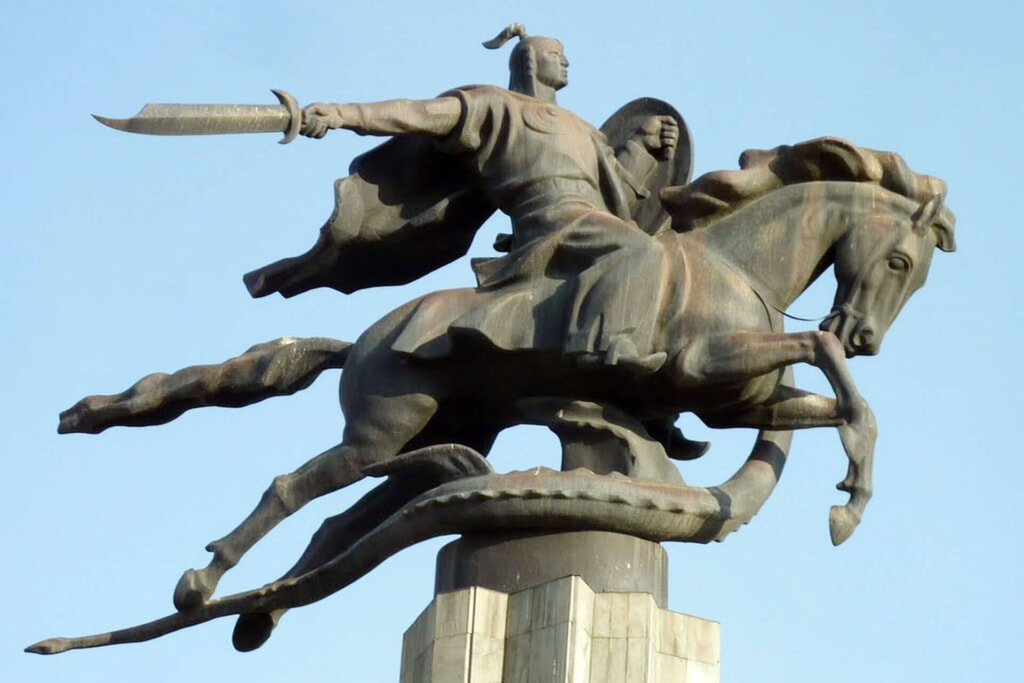
Gumbez of Manas
The Gumbez (Mausoleum) of Manas, a medieval architectural monument, is located in Kenkol valley, 22 km north-east of Talas. Although well known among people and in scientific literature as the Mausoleum of Manas, the inscription on the wall reads that the tomb belongs to the daughter of one of the rulers of the Chagatai Khanate. There is a famous legend saying that Kanykei, Manas’s wife, ordered masters from Bukhara and Samarkand to build this monument in memory of her deceased husband and that the girl’s name on the tomb was inscribed specially in order to distract the attention of the enemies. The walls of this building constructed of brick are decorated with Kyrgyz patterns and Arabic inscriptions. Today, it is surrounded by an architectural complex called Manas Ordo.
Manas-Ordo National Complex: The national cultural and historical complex Manas Ordo is located 22 kilometers from Talas in Tash-Aryk village. In its center is the kumbez. the grave of Manas. According to legend, it was built by his relatives. The great baatyr (hero) is buried here, at the location of his main headquarters. The epic of the same name, consisting of more than half a million lines, is about the life and deeds of Manas. It tells about a real baatyr, who returned the Kyrgyz from Altai to the Tien Shan and protected them from Chinese raids.
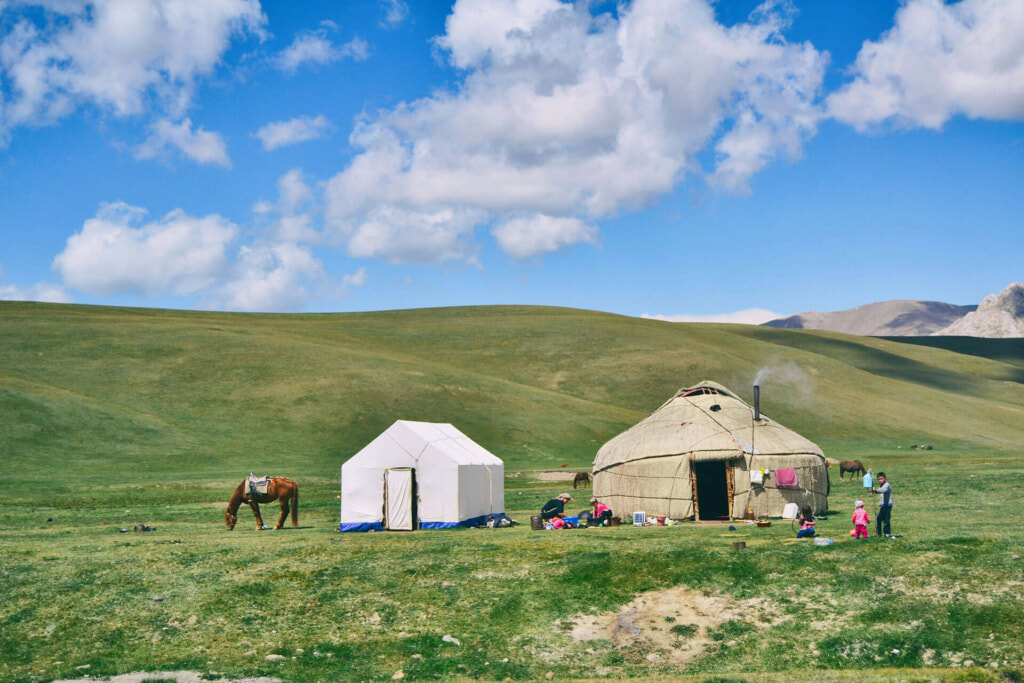
And more with Kyrgyzstan's landscapes: Tash Rabat, Karakol Ski Base, Son Kul Lake, Kel-Suu Lake, Monument to Manas the Great, Nikolai Przhevalsky Museum, Dungan Mosque, Alamedin Gorge, Grigorevskoye Canyon and Konorchek Canyons
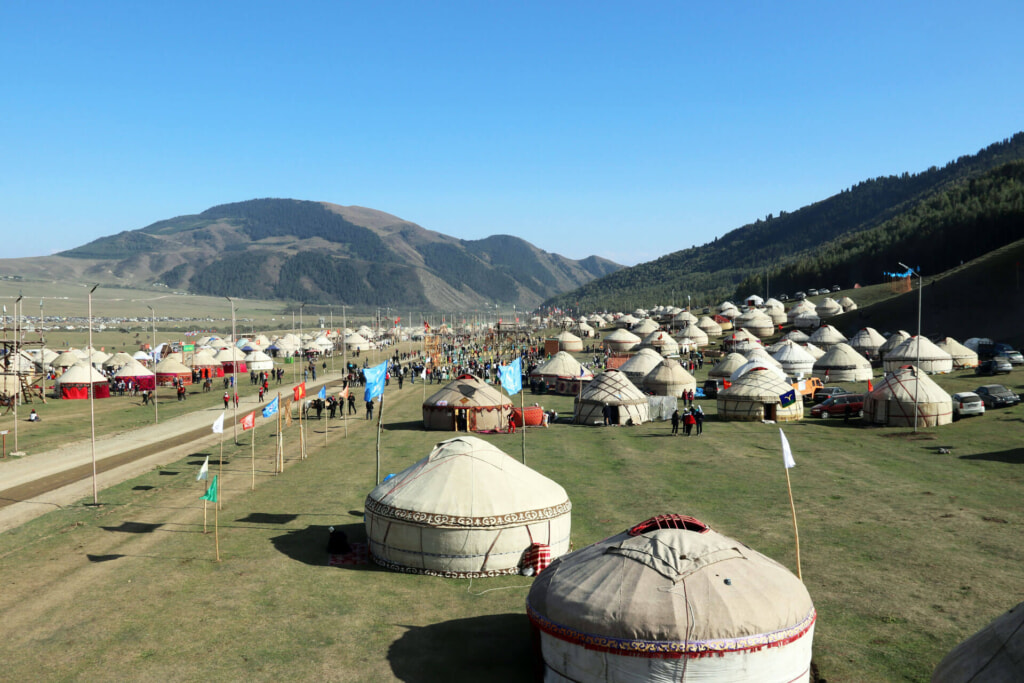
Enroute with Thien Xuan Travel to Kyrgyzstan, a legend on the Ancient Silk Road. Kyrgyzstan, a nation defined by its natural beauty. Joyously unspoilt mountainscapes, stark craggy ridges and rolling jailoos are brought to life by semi-nomadic, yurt-dwelling shepherds.
Thiên Xuân Travel – Live your travel dreams!
Park 2, 208 Nguyen Huu Canh Street, Ward 22,
Binh Thanh District, Ho Chi Minh City, Vietnam
📨 booking@thienxuantravel.com
☎️ +84 888 890 898 — 0938 558 228
Office in the United States
14114 Beech Glen Dr, Houston, TX 77083
☎️ +1 (281) 906-2744

